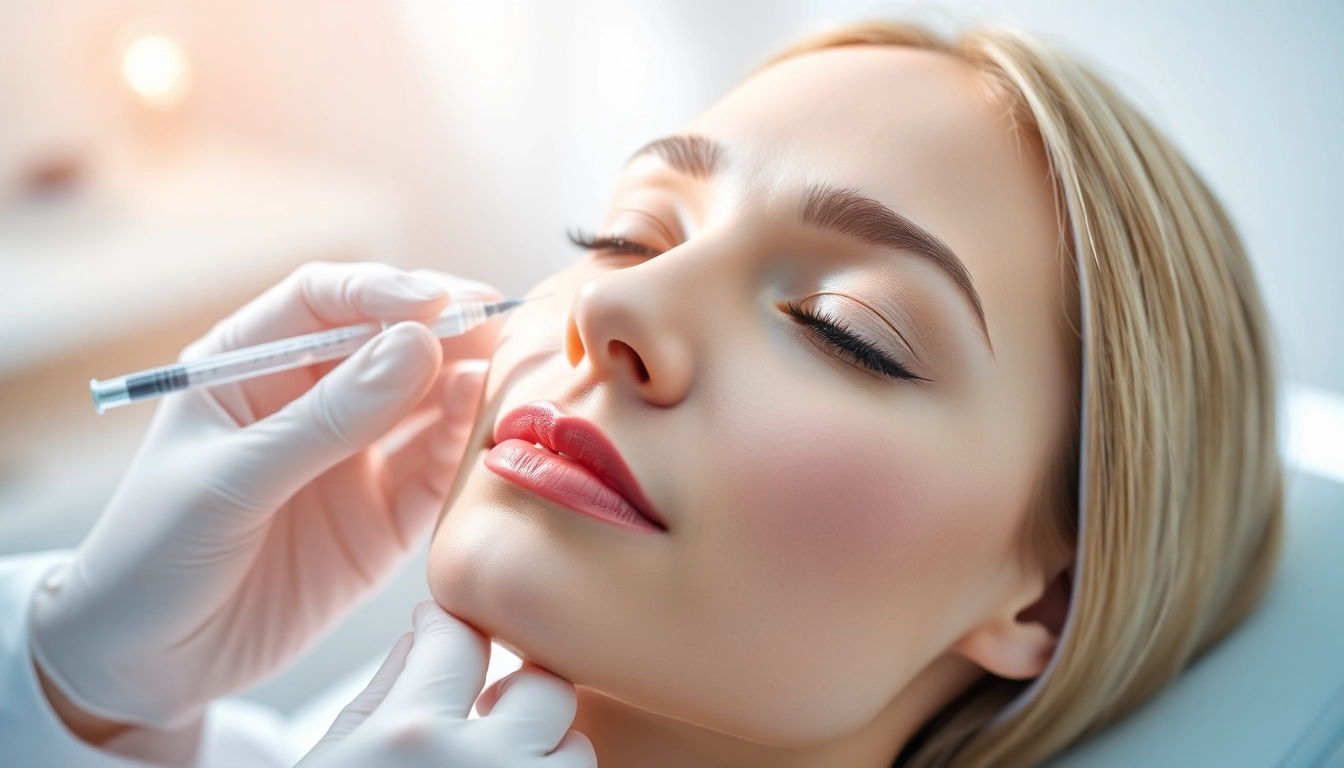Understanding Botox Injections
What Are Botox Injections?
Botox injections are a popular and widely recognized cosmetic procedure that involves injecting a purified protein derived from the bacterium Clostridium botulinum. This potent neurotoxin works to temporarily paralyze specific muscles, effectively reducing the appearance of facial wrinkles and lines. Most commonly, patients seek these injections to enhance their aesthetic appearance by smoothing out forehead lines, crow’s feet, and frown lines.
Beyond cosmetic applications, botox injections are also used to treat various medical conditions, including chronic migraines, excessive sweating (hyperhidrosis), and certain muscular disorders. The procedure itself has gained immense popularity due to its relatively quick application and minimal downtime.
How Botox Injections Work
The mechanism behind the effectiveness of Botox injections lies in its action on the nervous system. The protein obstructs the release of acetylcholine, a neurotransmitter responsible for muscle contraction. When injected, it blocks signal transmission between nerves and muscles, causing the targeted muscles to relax. As a result, over time, this leads to a reduction in the formation of wrinkles, as the overactive facial muscles no longer contribute to line formations.
The results of Botox injections can typically be observed within a few days, reaching full effectiveness in about two weeks. This temporary paralysis can last for three to six months, after which patients often return for maintenance treatments to sustain their aesthetic appearance.
Potential Medical Uses for Botox Injections
In addition to its well-known cosmetic benefits, Botox serves various medical applications:
- Chronic Migraines: For individuals suffering from frequent and severe migraines, Botox has been approved as a preventive treatment. By injecting Botox into specific sites on the head and neck, it can reduce the frequency of migraine attacks.
- Hyperhidrosis: Excessive sweating, particularly in the underarms, hands, and feet, can be effectively managed with Botox injections, providing relief for those affected by this condition.
- Cervical Dystonia: This neuromuscular disorder causes neck muscles to contract uncontrollably, leading to abnormal head positions or pain. Botox has proven effective in reducing muscle spasms associated with cervical dystonia.
- Overactive Bladder: Botox injections can assist in alleviating symptoms of overactive bladder, including urge incontinence, by relaxing the bladder muscles.
- Strabismus: Botox is also utilized in treating strabismus (crossed eyes) by restoring normal muscle balance.
Benefits of Botox Injections
Cosmetic Improvements from Botox Injections
The most common reason individuals opt for Botox injections is the desire for aesthetic improvement. The benefits are notable:
- Reduction of Fine Lines and Wrinkles: Botox is particularly effective in softening dynamic wrinkles—those caused by facial expressions, such as frowning or squinting—resulting in a smoother and more youthful appearance.
- Quick Procedure: Botox treatments can usually be completed in less than thirty minutes with minimal discomfort, making them particularly appealing for those with busy lifestyles.
- Non-Surgical Option: For individuals hesitant to pursue surgical procedures, Botox provides a non-invasive alternative to achieving a fresher look without the need for recovery time.
- Natural-Looking Results: When administered by a qualified professional, Botox can produce subtle results that maintain your natural expressions while diminishing the appearance of aging.
Medical Benefits of Botox Injections
While the cosmetic advantages are widely advertised, many patients find relief from various medical issues through Botox:
- Pain Relief: Botox’s ability to reduce muscle contractions can lead to significant pain relief, particularly for those with chronic conditions.
- Improved Quality of Life: Many people with chronic migraines or excessive sweating report improved day-to-day living after receiving Botox treatments, with decreased symptoms and better management of their conditions.
- Long-Lasting Results: The effects of Botox can persist for several months, providing extended relief from various medical issues without frequent intervention.
Long-Term Results of Botox Injections
Patients often wonder about the long-term impact of Botox injections. Regular treatments can lead to a cumulative effect, making muscles less likely to produce deep-set lines over time. Many users find that their skin looks smoother even when they’re not currently receiving injections due to the overall relaxation and repositioning of facial muscles established through the therapy.
Additionally, some studies suggest that consistent Botox usage may train the facial muscles to be less active, which may lead to fewer wrinkles forming in the first place. The result is a rejuvenated appearance that can last well beyond the injection’s immediate effects.
Procedure Overview for Botox Injections
What to Expect During Botox Injections
The procedure for receiving Botox injections is straightforward and typically involves the following steps:
- Consultation: A thorough consultation with a qualified practitioner is essential to discuss goals, medical history, and possible contraindications for treatment.
- Preparation: The treatment area is cleansed, and a local anesthetic may be applied to minimize discomfort.
- Injection: Using a fine needle, Botox is injected directly into the targeted muscles. Patients may feel a slight pinch or pressure, but significant pain is uncommon.
- Post-Treatment Care: After the procedure, patients can typically resume normal activities immediately but should avoid rubbing or massaging the treated area to prevent diffusion of the toxin.
Pre-Procedure Guidelines for Botox Injections
To ensure a successful treatment outcome, patients should follow pre-procedure guidelines:
- Avoiding blood thinners, such as aspirin and ibuprofen, for a few days prior can help reduce the risk of bruising.
- Steering clear of alcohol and supplements that thin the blood is also advisable.
- Consulting with the practitioner about medications, allergies, and medical conditions is essential to determine eligibility for treatment.
Post-Procedure Care for Botox Injections
Following the procedure, patients should adhere to specific care instructions to maximize results:
- Refrain from lying down for at least four hours to prevent the toxin from migrating.
- Avoid strenuous exercise for 24 hours post-treatment.
- If swelling or bruising occurs, applying ice packs gently may provide relief.
- Schedule a follow-up appointment with the provider to assess results and determine a timeline for future treatments.
Risks and Side Effects of Botox Injections
Common Side Effects of Botox Injections
Although considered safe when administered by trained professionals, Botox injections may present some side effects:
- Local reactions at the injection site, including swelling, redness, or bruising.
- Mild headache following the procedure.
- Temporary weakness in surrounding muscles, leading to drooping eyelids or uneven facial expressions in rare cases.
Serious Risks of Botox Injections
While severe complications are infrequently reported, it’s important to be aware of serious risks:
- Allergic Reactions: Some patients may experience allergic reactions, including rash, itching, or breathing difficulties.
- Diffusion of the toxin: In rare cases, Botox may migrate beyond the injection site, leading to unintended muscle paralysis elsewhere.
- Infection: As with any injection, there is a risk of infection at the injection site.
Managing Complications from Botox Injections
In the event of side effects or complications, it is vital to contact a qualified healthcare provider for advice. They can evaluate the situation accurately and provide appropriate management, which may include medications to alleviate symptoms or additional treatments to counteract undesired effects.
Choosing the Right Provider for Botox Injections
Factors to Consider When Selecting a Provider for Botox Injections
Choosing an experienced and qualified practitioner is critical to achieving safe and effective results with Botox injections. Consider the following factors:
- Qualifications: Verify that the provider has relevant medical training and certifications in administering Botox.
- Experience: Look for practitioners with a solid track record in performing Botox procedures, preferably with positive reviews or testimonials from previous patients.
- Facility Standards: Ensure that the treatment facility is reputable and follows safety and sanitation guidelines.
Questions to Ask Before Receiving Botox Injections
Prior to scheduling a procedure, it’s helpful to have a list of questions to ensure you are well informed:
- What type of Botox product will you be using?
- How many units will be injected and into which specific areas?
- What should I expect during and after the treatment?
- What are the potential side effects, and how often do they occur?
- What is your experience administering Botox injections?
Finding a Qualified Professional for Botox Injections
To locate a qualified provider for Botox injections:
- Seek referrals from friends or family who have had the procedure.
- Consult online reviews and ratings of providers in your area.
- Check professional organizations to confirm the provider’s credentials and standing in the medical community.



